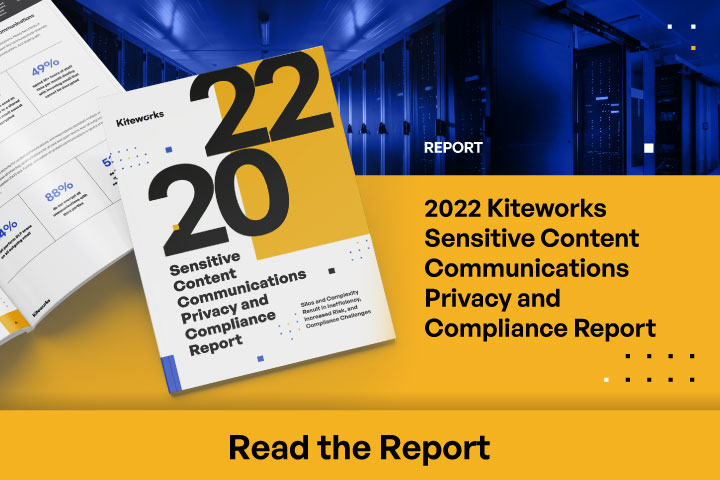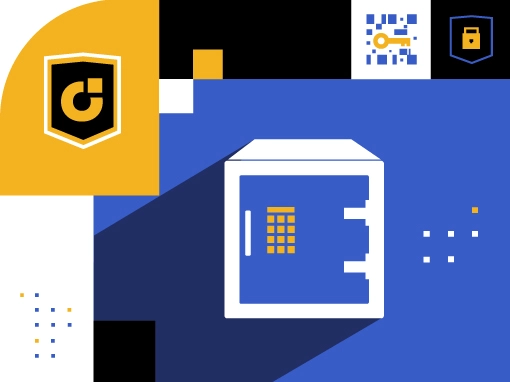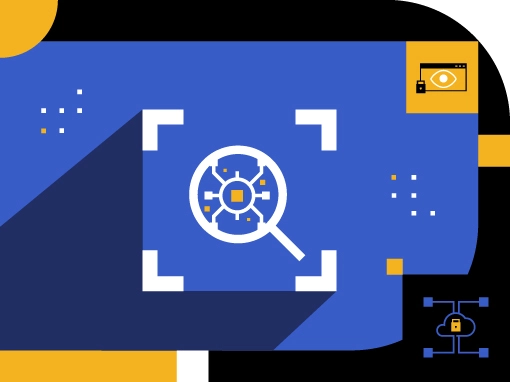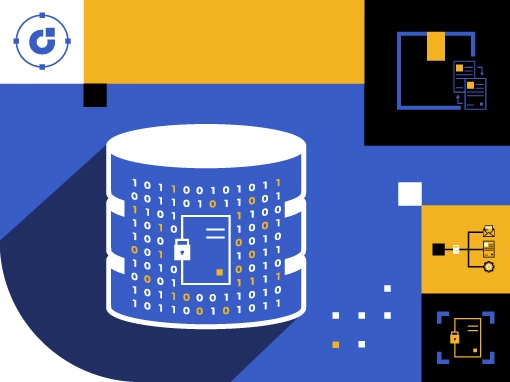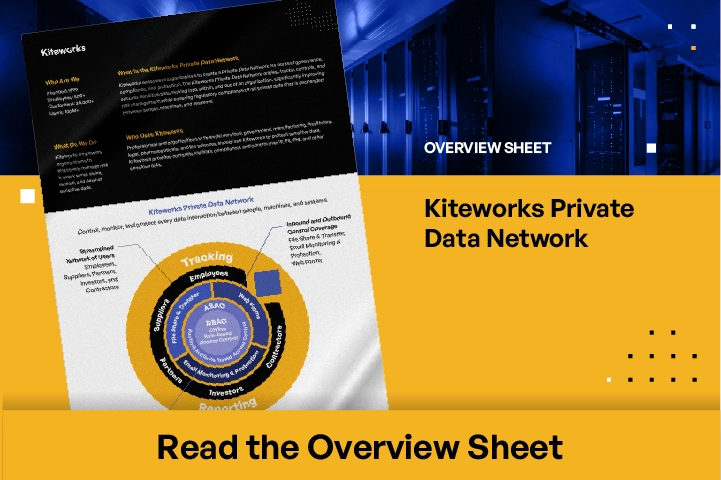Enhance Data Protection with a Hardened Virtual Appliance
CISOs are entrusted with ensuring the security and integrity of their organization’s data, applications, and systems. Kiteworks runs on a hardened virtual appliance and therefore provides a robust defense against potential threats that jeopardize your organization’s most sensitive data. Unnecessary services are disabled, configuration defaults are set to the most secure posture, unused ports and SSH access are shut off by default, and only the web service tier is exposed in the DMZ, and communication between clustered servers is always secure and encrypted. Kiteworks also provides embedded antivirus protection, web application firewall (WAF), and intrusion detection system (IDS), automatic software stack upgrades, fast deployment of patches and hot fixes, periodic penetration tests and regular security audits, and secure coding practices in conformance with OWASP.
LEARN HOW KITEWORKS’ HARDENED VIRTUAL APPLIANCE PROVIDES ENHANCED DATA PROTECTION
Leverage Unified Audit Logs for Anomaly Detection and Regulatory Compliance
CISOs can better detect anomalies, ensure compliance, and enhance risk management when they can see what’s happening. With an immutable audit log, Kiteworks helps CISOs detect suspicious downloads, login failures, permission changes, and other anomalies. Kiteworks syslogs also drive forensic investigation into any connected on-premises or cloud data source. Even file scans for DLP, AV, and ATP are logged and reportable. CISOs utilize these logs to create their own SIEM dashboard or feed them into a standalone SIEM solution like Splunk, ArcSight, LogRhythm, FireEye Helix, and others. Finally, Kiteworks’ audit logs let CISOs show auditors and regulators who has access to PII and what they’re doing with it. This reliable record of all file transactions streamlines audits, strengthens regulatory compliance, and supports legal hold requests. They allow CISOs to centrally monitor and preserve evidence, helping meet investigative and regulatory requirements like GDPR, HIPAA, and many others.
EXPLORE THE BENEFITS OF UNIFIED AUDIT LOGS WITH KITEWORKS FOR STREAMLINED COMPLIANCE ASSURANCE
Protect Your Organization From Malware and Advanced Persistent Threats
Organizations are constantly under attack by bad actors, criminal syndicates, and rogue nation-states. No company is too small, boring, or obsolete. As a result, CISOs must enable proactive advanced threat protection to identify and quarantine potential threats that can create a data breach, compliance violation, or business disruption. Kiteworks integrates with leading ICAP-compatible ATP solutions, including Check Point SandBlast and FireEye Malware Analysis (AX). Kiteworks feeds incoming files through these and other solutions to check for zero-day and known threats. Suspicious files are quarantined and security personnel are notified. All activity is fully logged and visible via the CISO Dashboard, as well as exportable to an organization’s syslog and SIEM solution.
FIND OUT HOW KITEWORKS’ ADVANCED THREAT PROTECTION PROVIDES ROBUST SECURITY FOR YOUR DATA
Control Access to Sensitive Data and Enforce What Can Be Done With It
Just because sensitive data sits behind the firewall doesn’t mean anyone should be able to access it. Insider risk like theft, sabotage, and misdelivery can lead to data leaks, compliance violations, and litigation. CISOs therefore must ensure only authorized personnel have access to sensitive data like personnel records, customer records, and financial information. Kiteworks helps CISO mitigate insider risk with robust and customizable access controls. These controls allow CISOs to not only determine who can access sensitive data but also what they can do with it once accessed. This includes permissions for viewing, editing, and sharing data, which can be tailored to each user’s role and responsibilities. Kiteworks also offers real-time monitoring capabilities, so CISOs can see who is accessing sensitive data and what they’re doing with it. The end result? CISOs gain peace of mind knowing that their sensitive data is well-protected and only available to those who truly need it.


Secure Your Organization With AI-enabled Anomaly Detection
Artificial Intelligence (AI) has revolutionized how businesses operate and scale. CISOs who ignore or procrastinate incorporating AI into their cybersecurity strategy do so at their own peril. It’s becoming in fact increasingly important to integrate AI into cybersecurity as the sophistication of cyberattacks (which also feature AI) increases. Kiteworks employs advanced AI technology to enable anomaly detection, enabling CISOs to proactively identify and respond to potential security threats. Kiteworks’ AI-enabled anomaly detection capability is designed to identify unusual patterns or behaviors that may indicate a potential security breach. This advanced technology goes beyond traditional security measures by learning and adapting to an organization’s unique data usage patterns. CISOs can then use this knowledge to detect any deviations that could signify an attempted intrusion and allow for immediate response to potential threats.
Govern Sensitive Data Wherever It’s Stored
Businesses have more places to store data than ever before: on-premises, in the cloud, on devices. Hardware, software, systems, applications; the opportunities are endless. Unfortunately, so are the threats to sensitive data. Where is sensitive information stored? Who has access to it? With whom are they sharing it? Kiteworks provides CISOs the critical insight into who has custody of sensitive data, no matter where it’s stored: file shares, ECM systems like SharePoint, and public cloud storage services like Box and Microsoft OneDrive for Business. CISOs also know the data is shared securely and in compliance, whether it’s shared through email, file sharing, MFT, or another channel. CISOs can also enforce role-based sharing policies while honoring source permissions, locking, and versioning. Finally, all data access and sharing is tracked and recorded for suspicious behavior, forensic investigations, and regulatory compliance.
DISCOVER THE SECURITY AND PRODUCTIVITY BENEFITS OF SECURE DATA ACCESS
Frequently Asked Questions
CISOs and their organizations should stay up to date with the latest regulatory requirements and standards that are relevant to their respective industries, such as the General Data Protection Regulation (GDPR), Health Insurance Portability and Accountability Act (HIPAA), Family Educational Rights and Privacy Act (HIPAA), and the California Consumer Privacy Act (CCPA). They should also establish strong data governance policies and procedures, conduct regular privacy impact assessments, and implement technical and organizational measures to protect personal data.
To secure public cloud environments, organizations should follow several best practices, including but not limited to using strong authentication and access controls, implementing encryption for data at rest and in transit, and regularly monitoring cloud environments for potential security threats. It is also important to establish a shared responsibility model with cloud providers to ensure that security responsibilities are clearly defined and understood by both the cloud provider and the customer.
Preventing insider threats requires a multifaceted approach that includes background checks and security clearances for employees with access to sensitive data, conducting regular security awareness training for all employees, and monitoring and auditing employee activity on company networks and systems. Implementing access controls, advanced threat protection (ATP), and data loss prevention (DLP) technologies can also help prevent unauthorized access to sensitive data.
CISOs and their organizations can ensure secure sharing of sensitive information across enterprise borders by implementing a variety of security measures. These can include encryption of data in transit and at rest, using secure communication channels, restricting access to sensitive information, and implementing security protocols and procedures that demonstrate regulatory compliance.
CISOs can significantly mitigate the impact of a cybersecurity incident as long as they are adequately prepared for this inevitable event. CISOs should first develop an incident response plan. This plan should include a thorough list of procedures for identifying the scope and extent of the breach, containing the breach to prevent further data loss, notifying affected stakeholders, and conducting a thorough investigation into the cause of the breach. CISOs should also work to remediate the breach by implementing additional security measures to prevent similar incidents from occurring in the future.
FEATURED RESOURCES
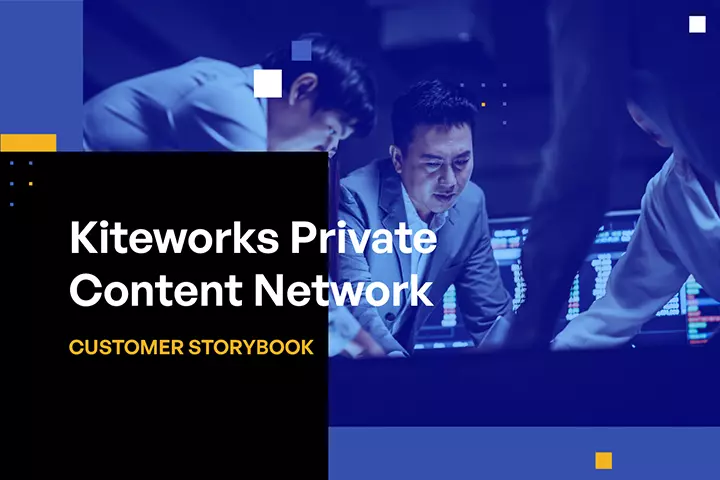
Customer Use Cases: Kiteworks Private Content Network Innovations
